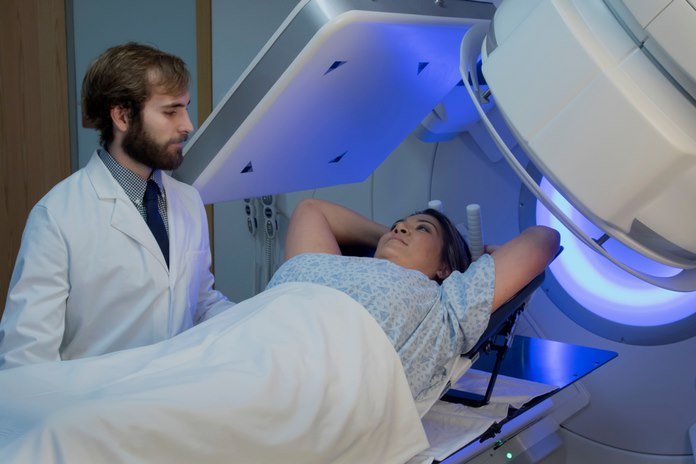Radiation Therapy
Radiation therapy is a treatment to cause the death of cancer cells by using high-energy X-rays (or proton beams). Over recent years, major improvements have been made in these treatments, reducing the damage to normal tissues surrounding cancer.
Radiation may be administered externally – where radiation is delivered to the body from outside, similar to an X-ray machine, or internally (brachytherapy) – where radioactive material is either temporarily or permanently injected or implanted into the body.
Radiation therapy, as with other cancer treatments, is used for different reasons and with different objectives. Such aims may be:
- Cancer cure: For example, stereotactic body radiation therapy (SBRT) may be used in an attempt to cure a small cancer that can not otherwise be reached by surgery, or to eliminate an isolated metastasis entirely.
- As neoadjuvant therapy: Radiation therapy may be carried out in conjunction with chemotherapy to reduce tumor size prior to surgery. For instance, this combination may be used to reduce the size of an inoperable lung cancer so that surgery can be performed afterwards.
- As adjuvant therapy: During surgery, radiation therapy may be used to treat any cells left over after surgery. An example of this is using radiation therapy after a mastectomy to the chest wall.
- Preventively: An good example of preventive therapy is giving brain radiation therapy to prevent brain metastasis in people with cancer of the small cell lung carcinoma.
- Palliative radiation therapy: It refers to radiation being used to treat cancer symptoms – but not to cure cancer. It may be used to decrease pain, lower pressure or relieve cancer-caused obstructions.
Stem Cell Transplants
Stem cell transplants replace the stem cells in the bone marrow, as opposed to a solid organ transplant like a kidney transplant. Such hematopoietic stem cells are the starting cells that can differentiate between all of the body’s blood cells including RBCs, WBCs,and platelets.
High doses of drugs plus radiation are given for the destruction of cells in the bone marrow in this procedure. The stem cells are then substituted in one of two ways.
Before chemotherapy – A person’s own stem cells are removed in an autologous stem cell transplant, and then replaced.
Allogeneic stem cell transplant – TYhe cells in the bone marrow are replaced with stem cells from a matched donor. Stem cell transplants are most commonly used in leukemia, lymphoma, myeloma and tumors of the germ cells.

